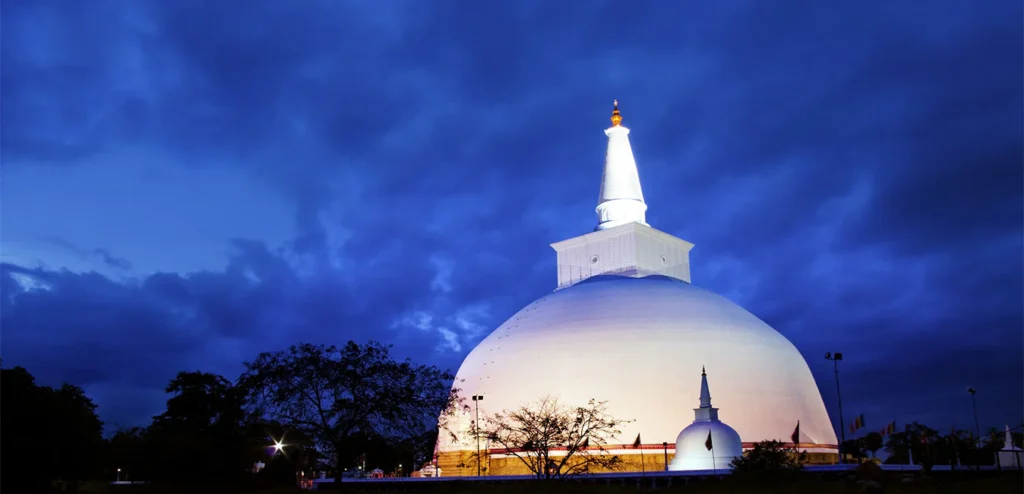Home
Explore the Timeless Splendor of Anuradhapura Ancient City: A UNESCO World Heritage Site in Sri Lanka
Anuradhapura Ancient City, a UNESCO World Heritage Site, is a mesmerizing destination that offers a captivating journey through Sri Lanka’s rich cultural and historical tapestry. As one of the oldest continuously inhabited cities in the world, Anuradhapura is a treasure trove of ancient monuments, sacred sites, and archaeological wonders, making it a must-visit for history enthusiasts and spiritual seekers alike.


Anuradhapura, founded in the 4th century BCE, served as the capital of Sri Lanka for over a millennium and was the epicenter of Theravada Buddhism in the region. The city’s historical significance is deeply rooted in its role as a major political and religious hub, where kings and monks contributed to the development of Sri Lankan civilization. The city’s ruins, spanning over 40 square kilometers, reflect a sophisticated urban center with advanced engineering, artistic achievements, and spiritual devotion.


Anuradhapura Ancient City is renowned for its vast array of archaeological and architectural wonders

Ruwanwelisaya Dagoba: This majestic stupa, constructed by King Dutugemunu in the 2nd century BCE, is a symbol of Anuradhapura’s architectural grandeur. Standing over 100 meters tall, it is one of the most revered Buddhist stupas, enshrining relics of the Buddha. The gleaming white dome against the blue sky creates a striking visual impression.

Jaya Sri Maha Bodhi: One of the most sacred sites in Anuradhapura, this ancient fig tree is believed to have grown from a cutting of the original Bodhi tree under which the Buddha attained enlightenment. Planted in 288 BCE, it is the oldest historically authenticated tree in the world and a place of pilgrimage for Buddhists.

Abhayagiri Monastery Complex: Once a leading center of Buddhist learning, this complex includes the Abhayagiri Dagoba, which was among the tallest monuments of the ancient world. The monastery was home to thousands of monks and scholars, making it a beacon of religious and intellectual activity.

Thuparamaya Dagoba: Known as the oldest stupa in Sri Lanka, Thuparamaya was built by King Devanampiya Tissa in the 3rd century BCE to enshrine the right collarbone of the Buddha. Its distinctive bell-shaped structure exemplifies early stupa design.

Jetavanaramaya Stupa: Another colossal stupa, Jetavanaramaya, was built by King Mahasena in the 3rd century CE. It was one of the tallest structures of the ancient world and remains a testament to the architectural prowess of the time.


Anuradhapura is a living cultural landscape where ancient traditions and rituals continue to thrive. The city hosts numerous Buddhist festivals and ceremonies throughout the year, drawing pilgrims and tourists alike. Key events include the Poson Poya, which commemorates the introduction of Buddhism to Sri Lanka, and Vesak, celebrating the Buddha’s birth, enlightenment, and passing.


Enhance your visit to Anuradhapura Ancient City by exploring the surrounding attractions:





Anuradhapura Ancient City offers a profound and enriching experience, immersing visitors in the timeless heritage of Sri Lanka. Whether you are a history buff, a spiritual pilgrim, or a curious traveler, Anuradhapura provides a unique window into the island’s illustrious past and enduring cultural traditions.
Embark on a journey to Anuradhapura and uncover the secrets of this ancient city, where each monument and relic tells a story of a bygone era, and the sacred ambiance invites reflection and reverence. This UNESCO World Heritage Site stands as a testament to Sri Lanka’s rich cultural legacy and its enduring significance in the spiritual and historical landscape of the world.



This is the official website of the Ministry of Tourism, Republic of Indonesia. The contents listed on this website are intended for informational purposes rather than commercial. Any displayed sale is meant as a token of partnership and will always redirect you to our partners’ sites.